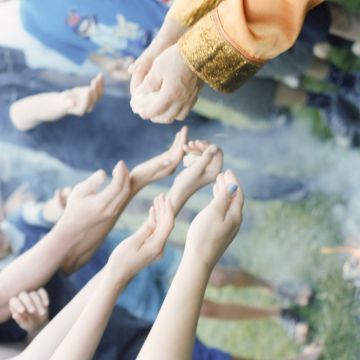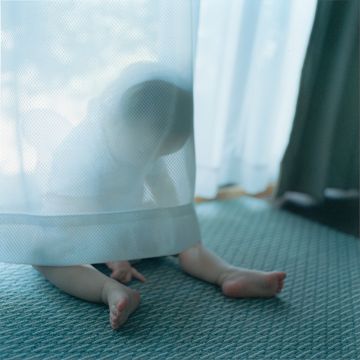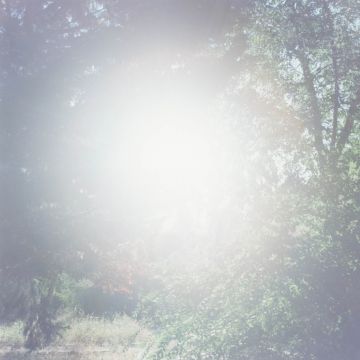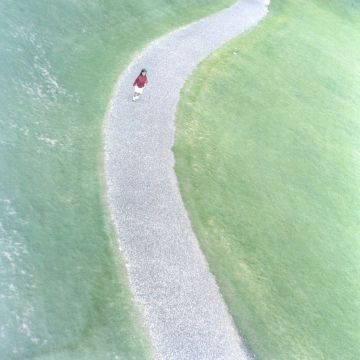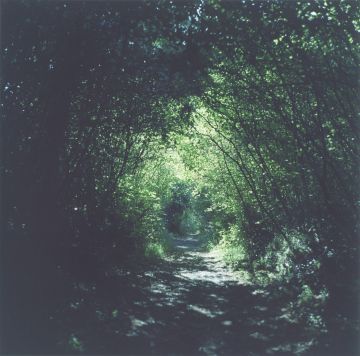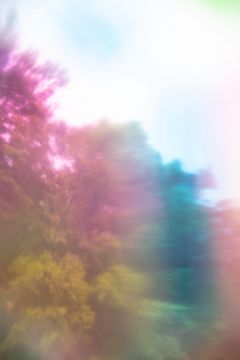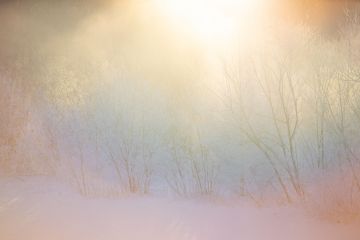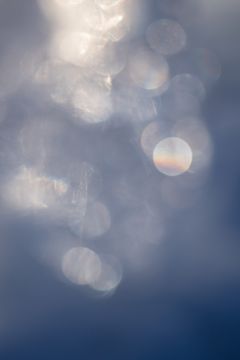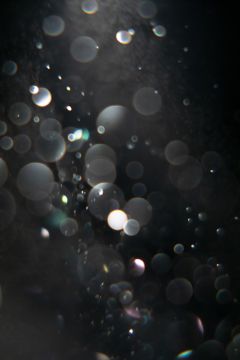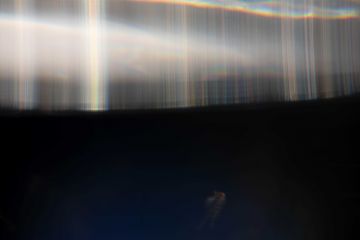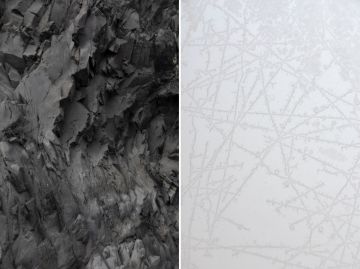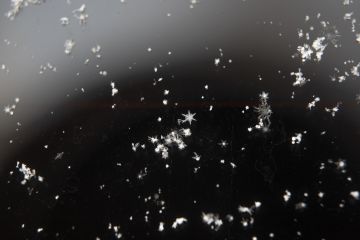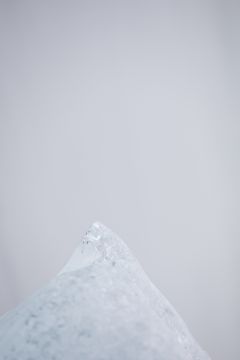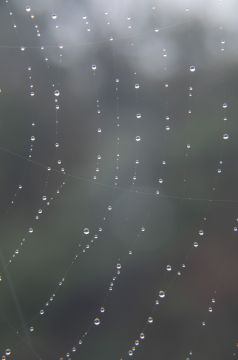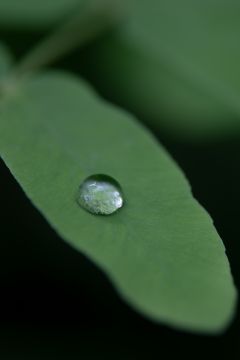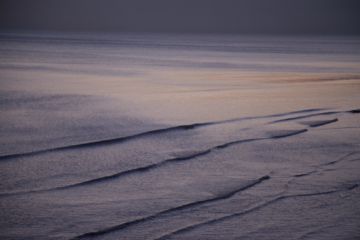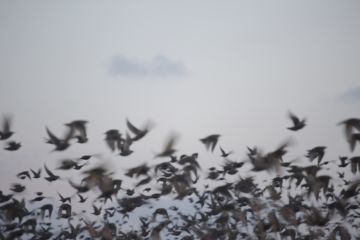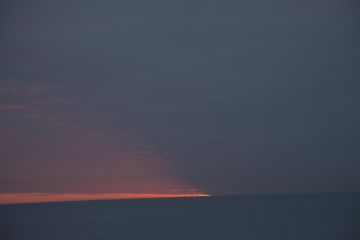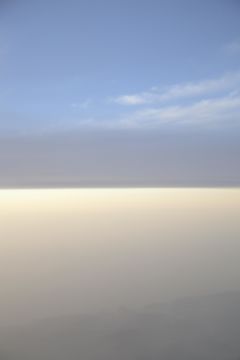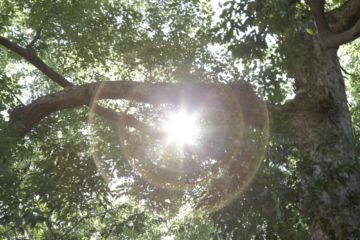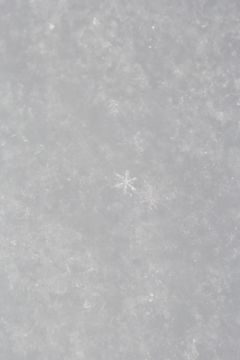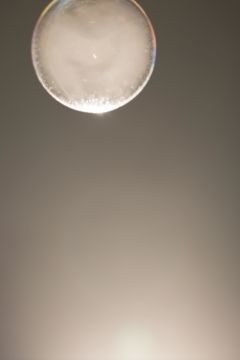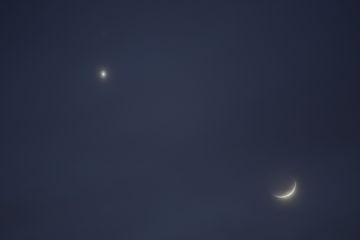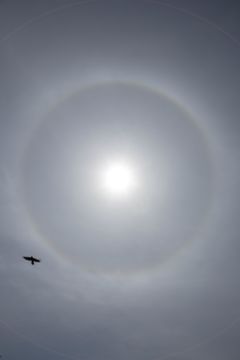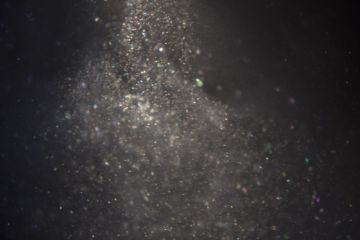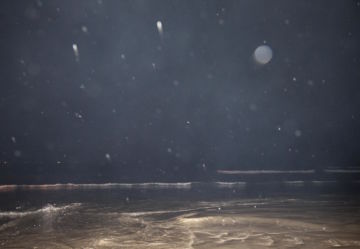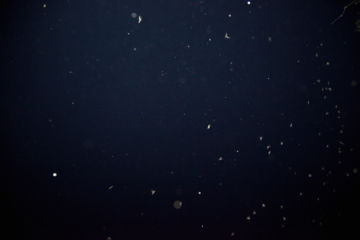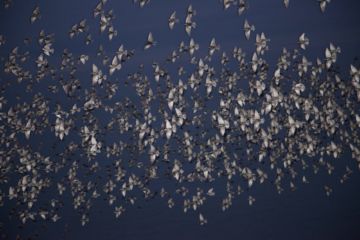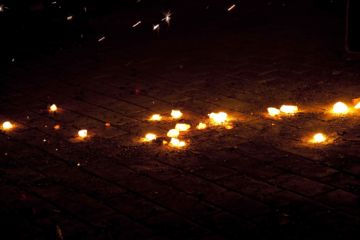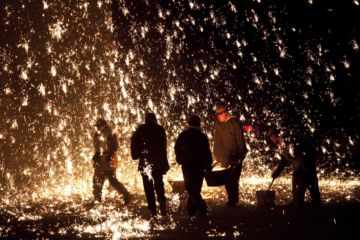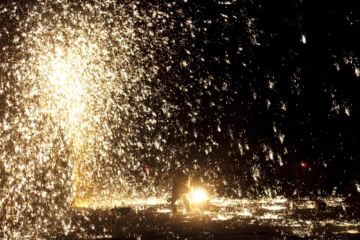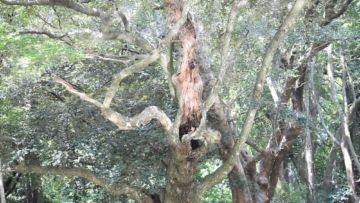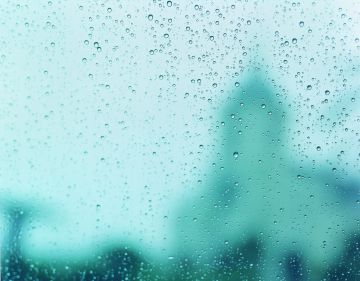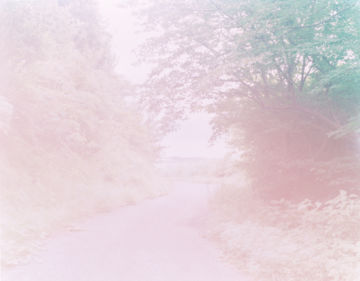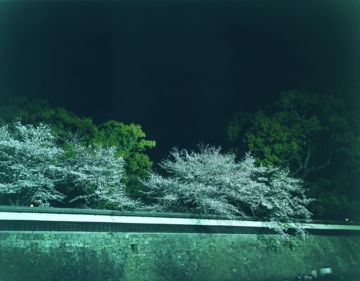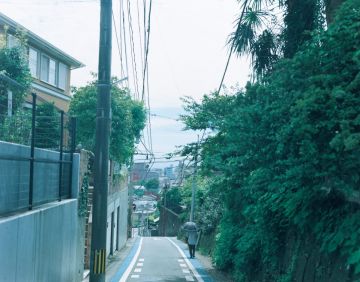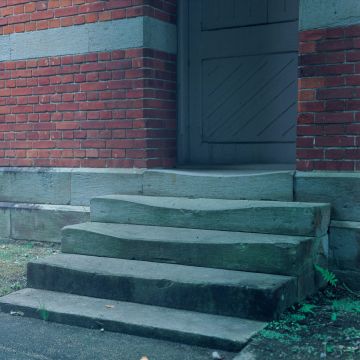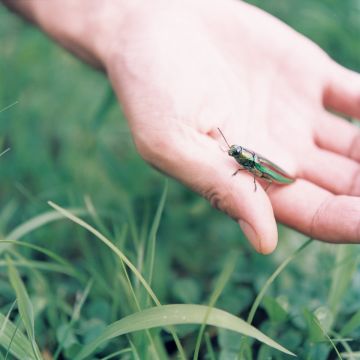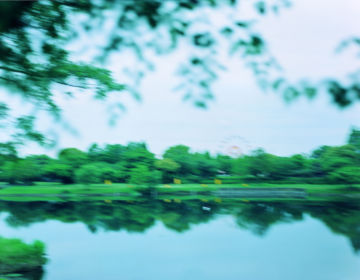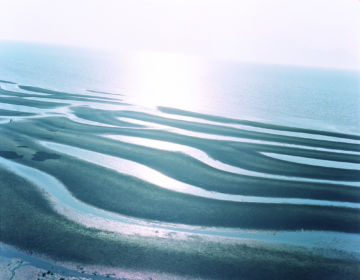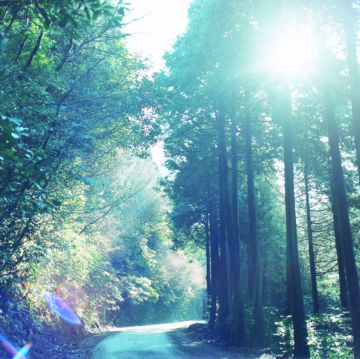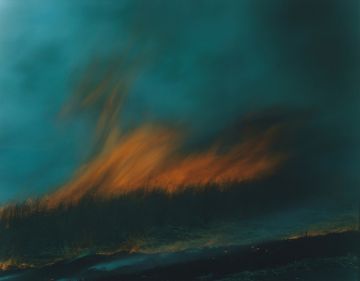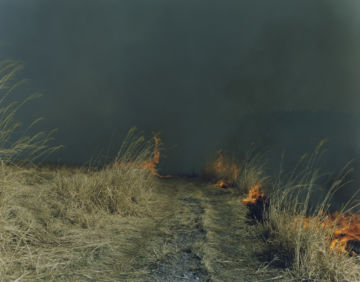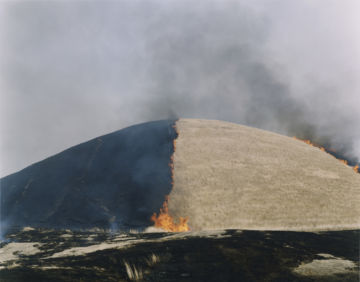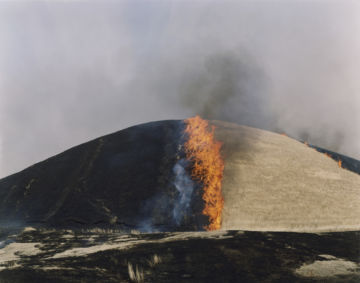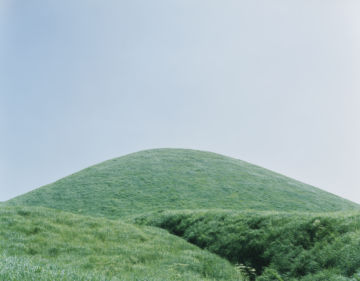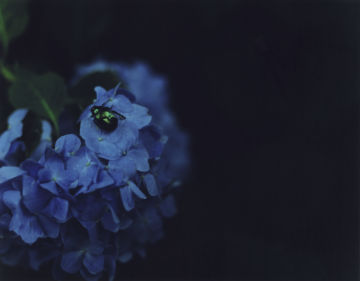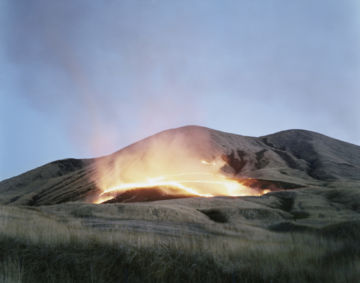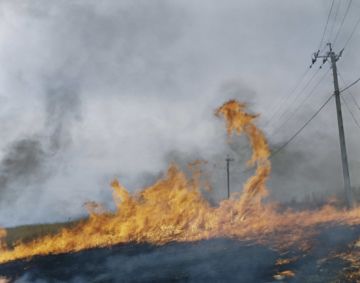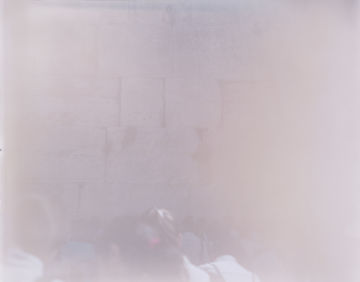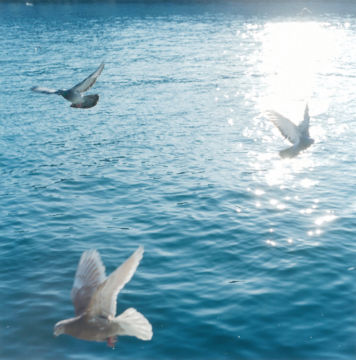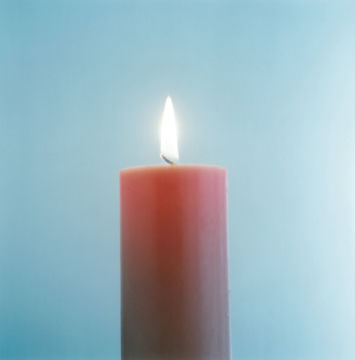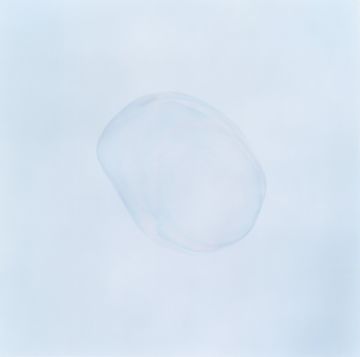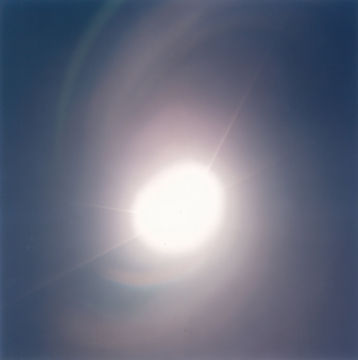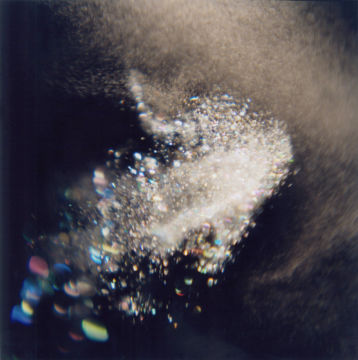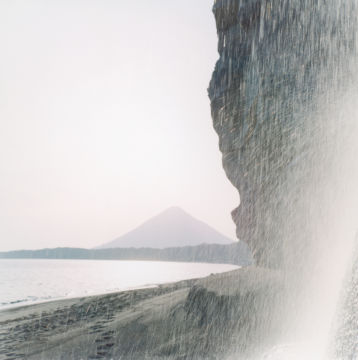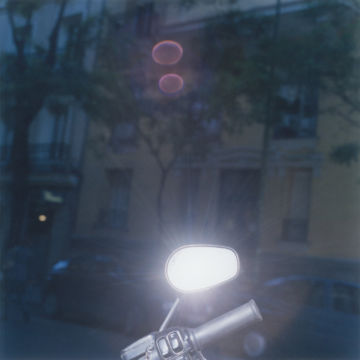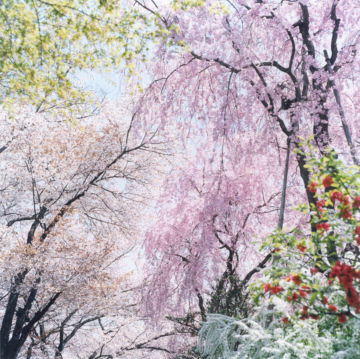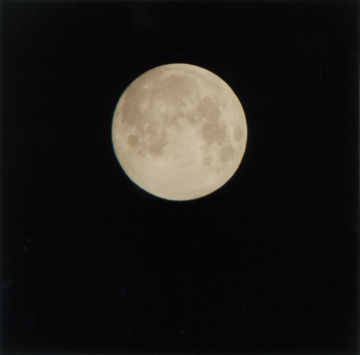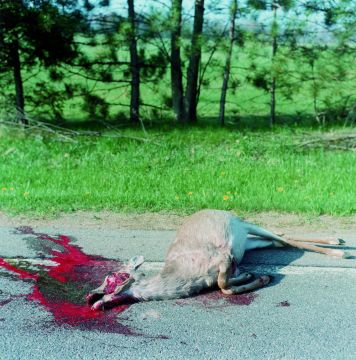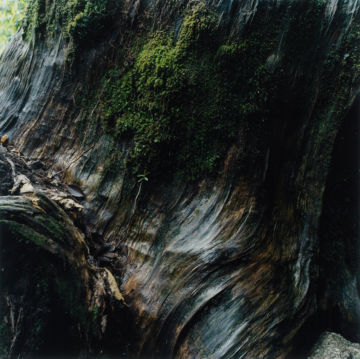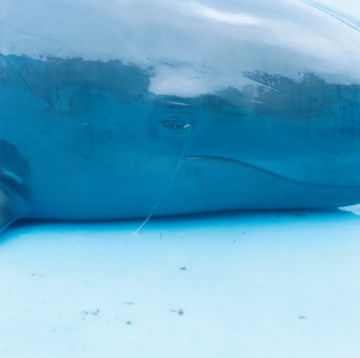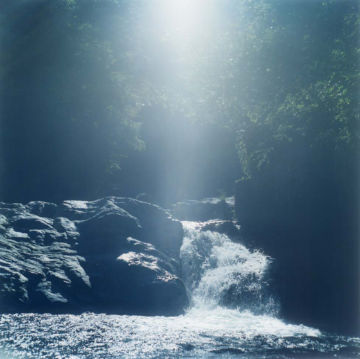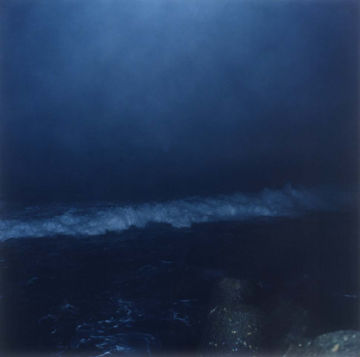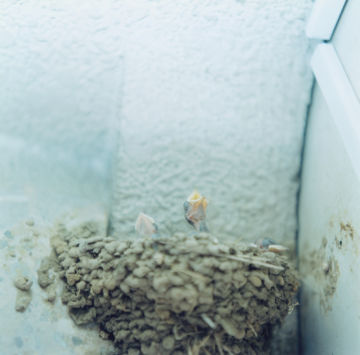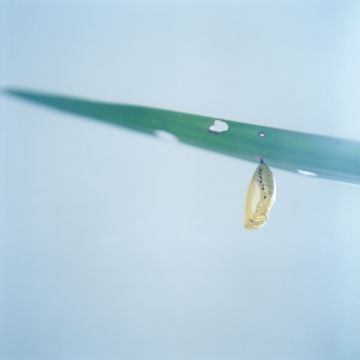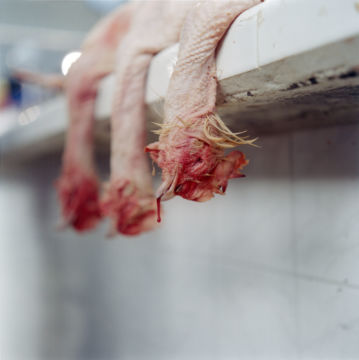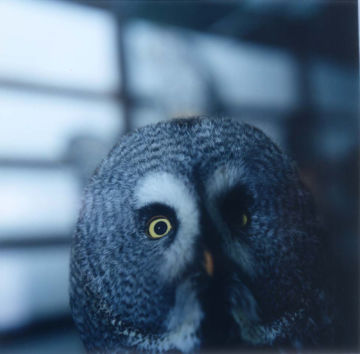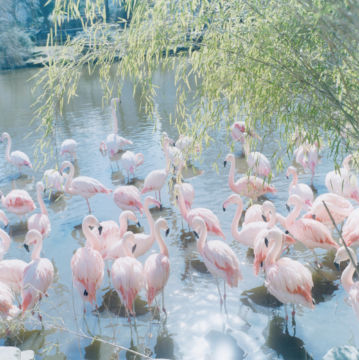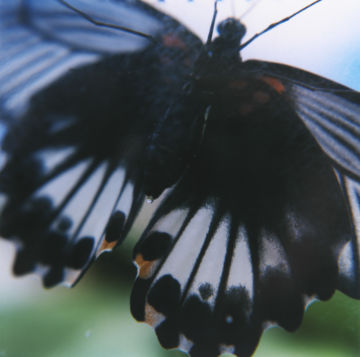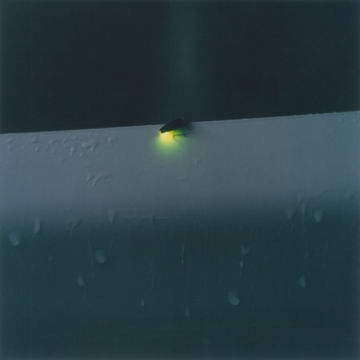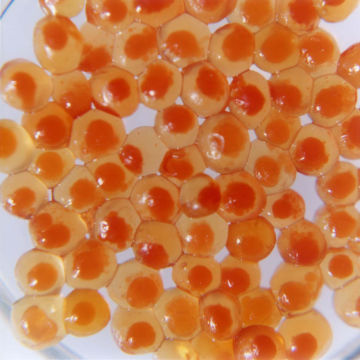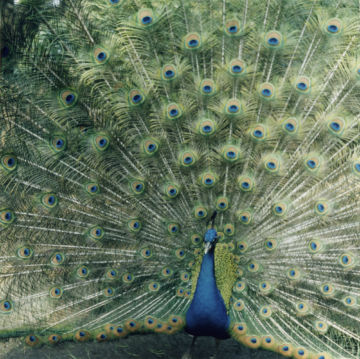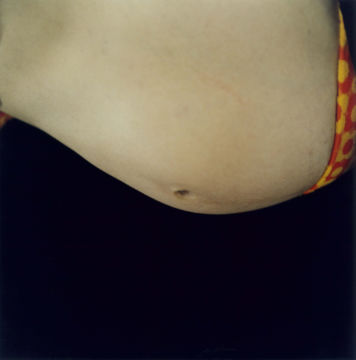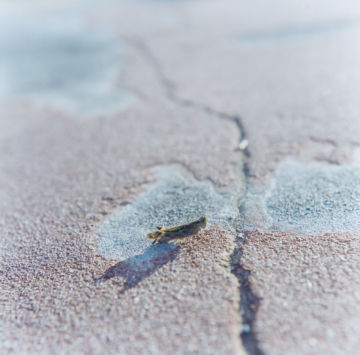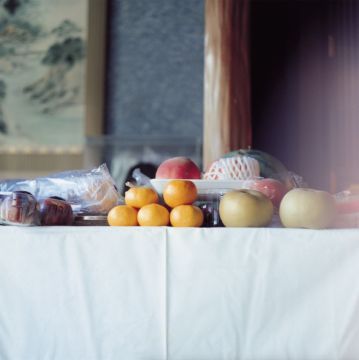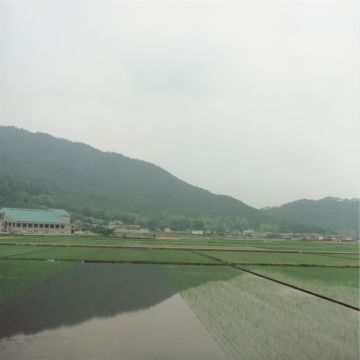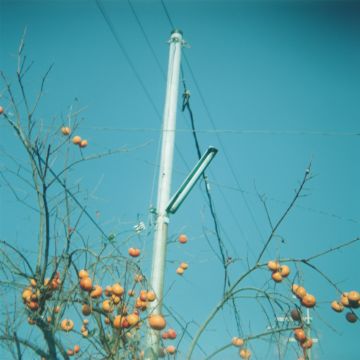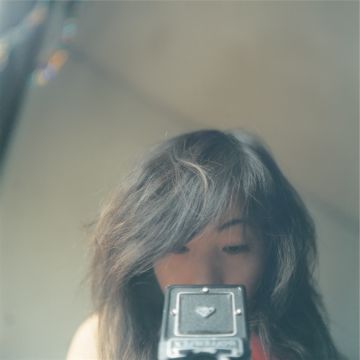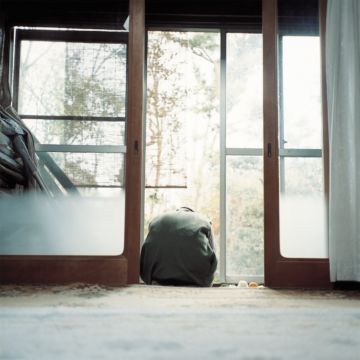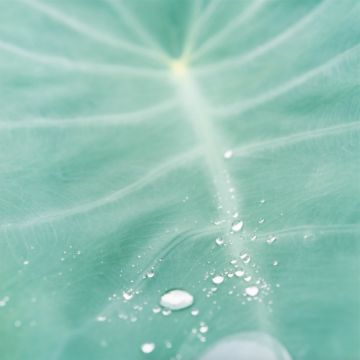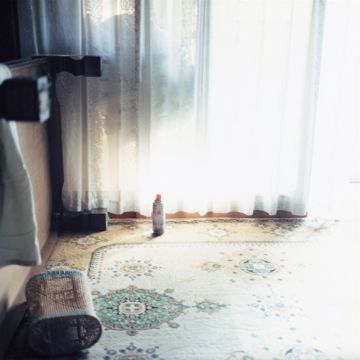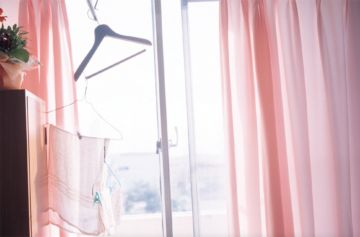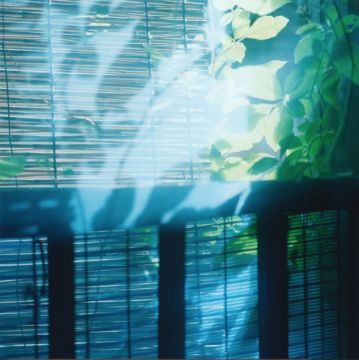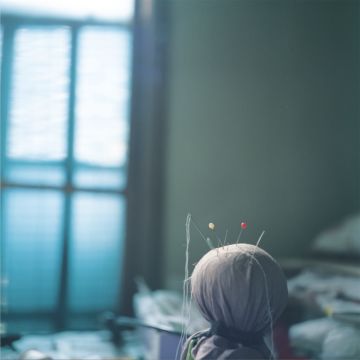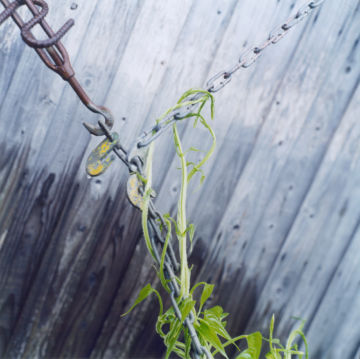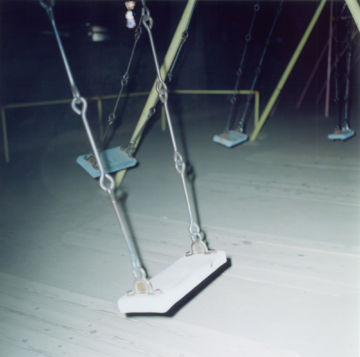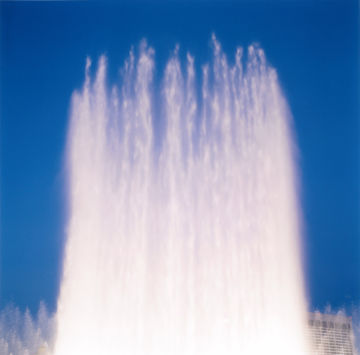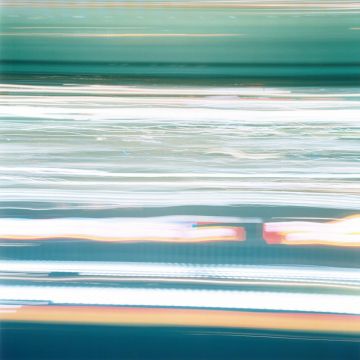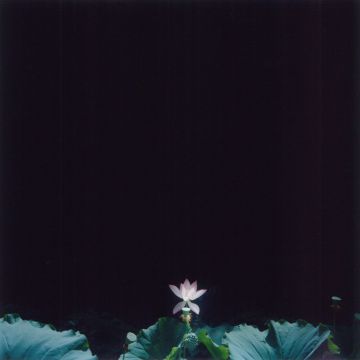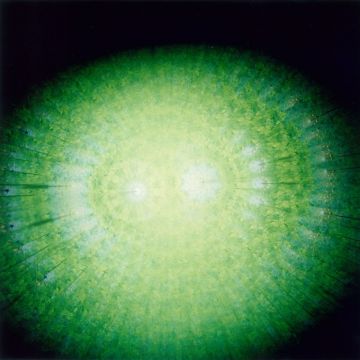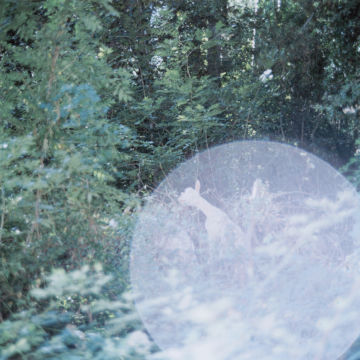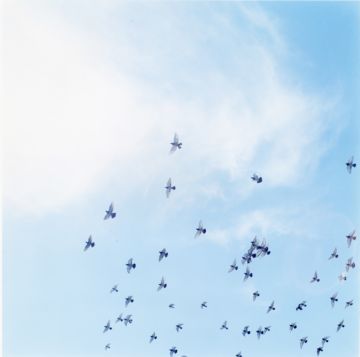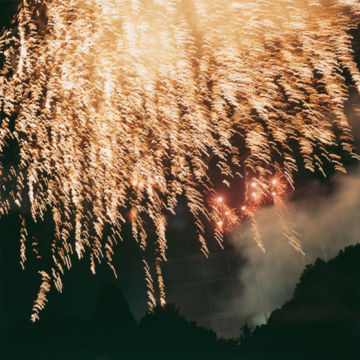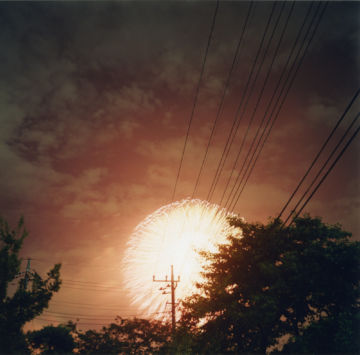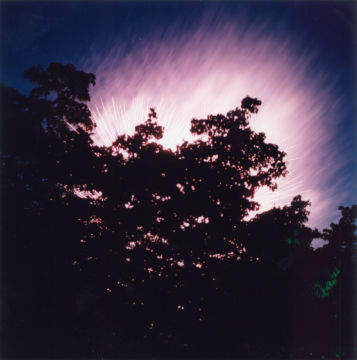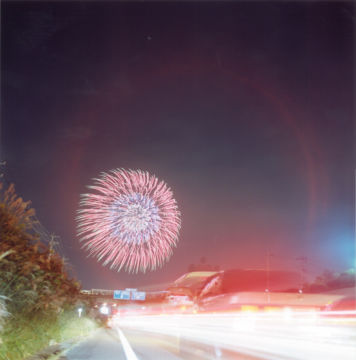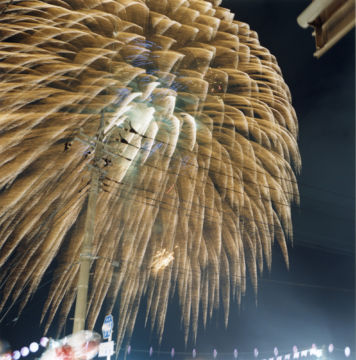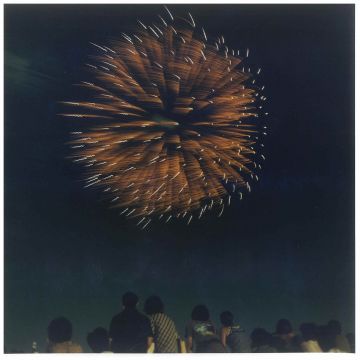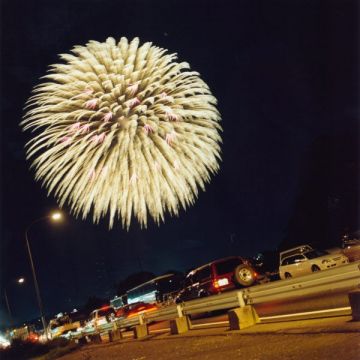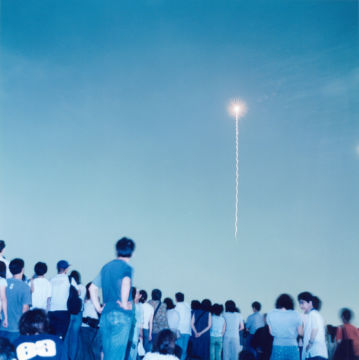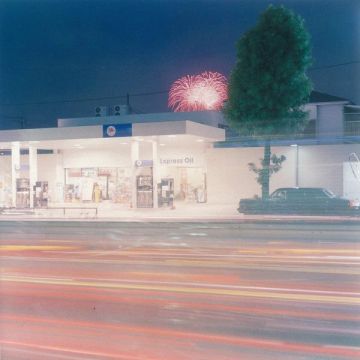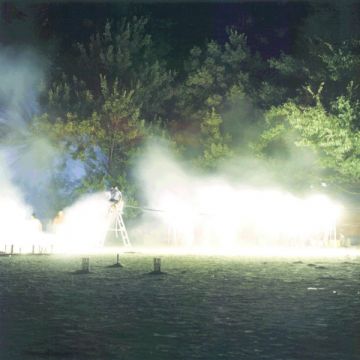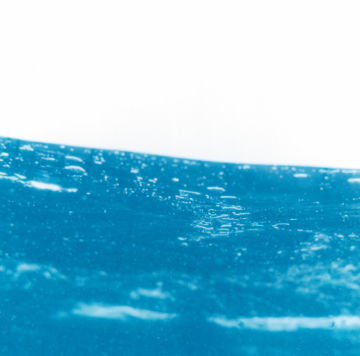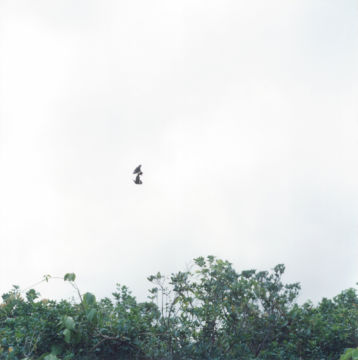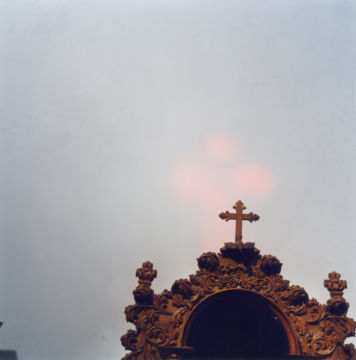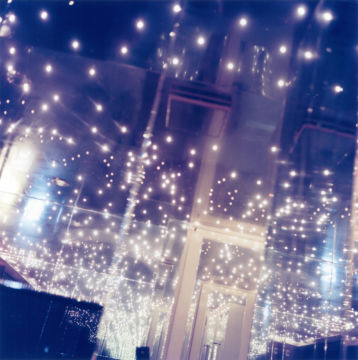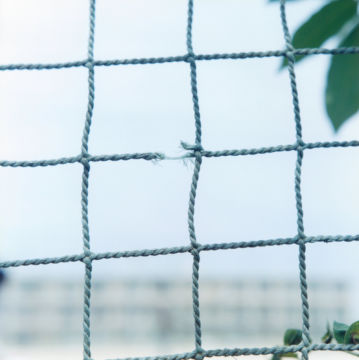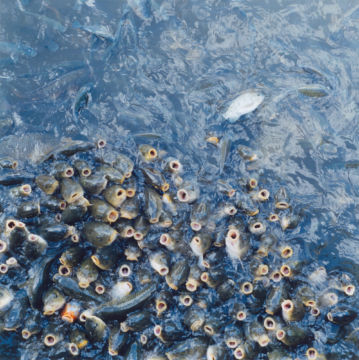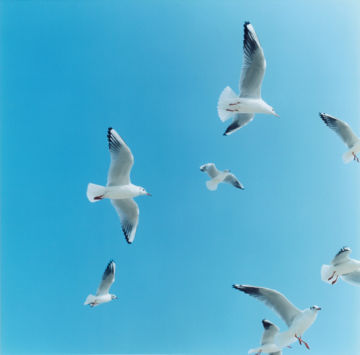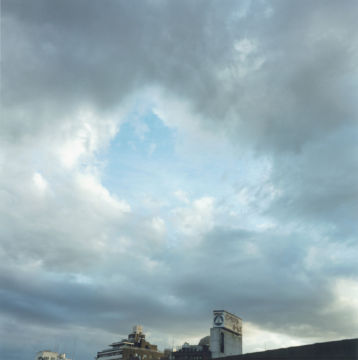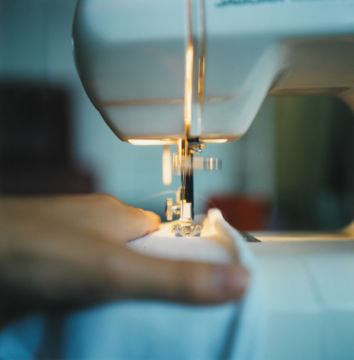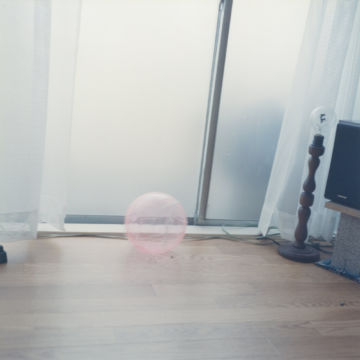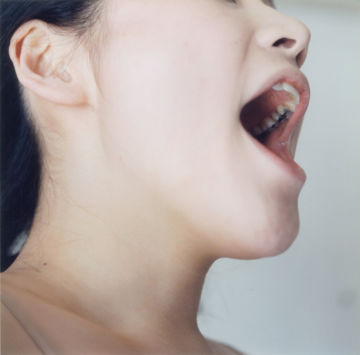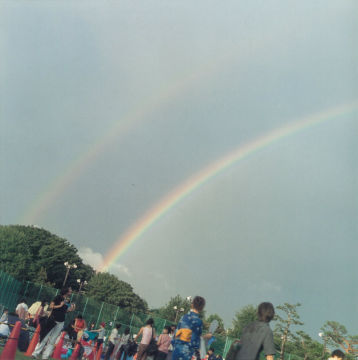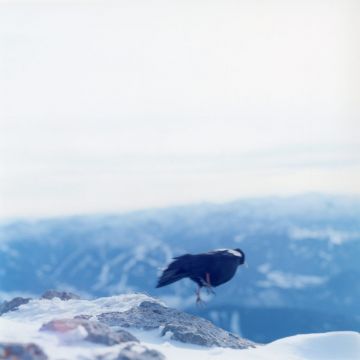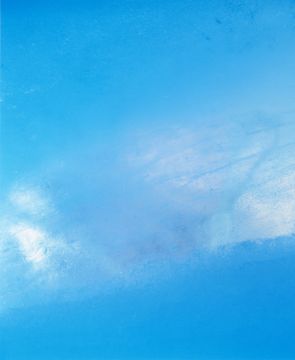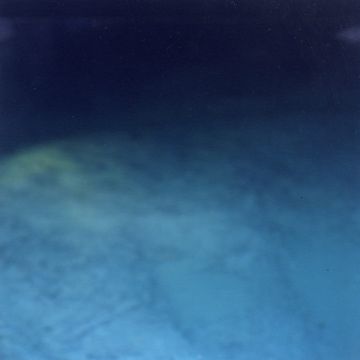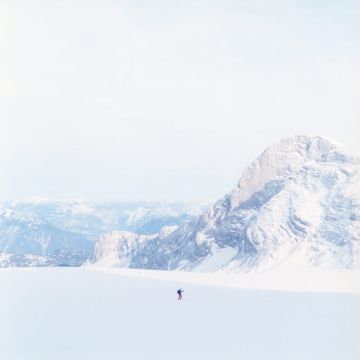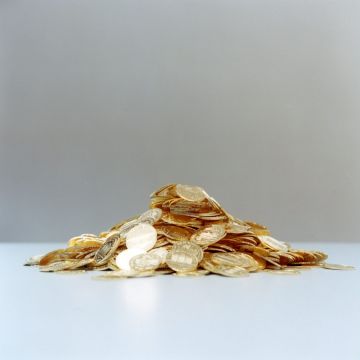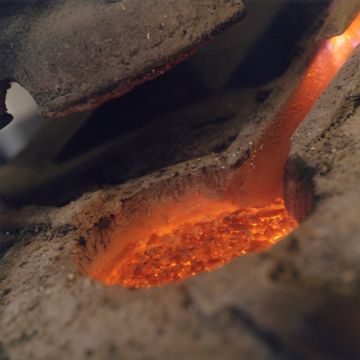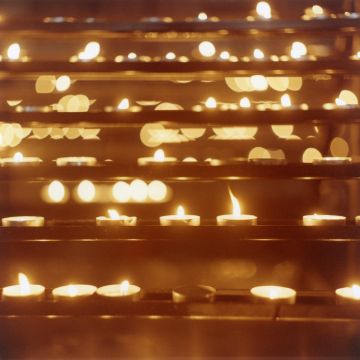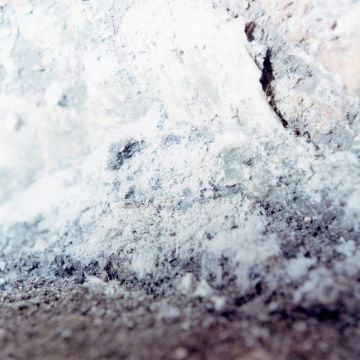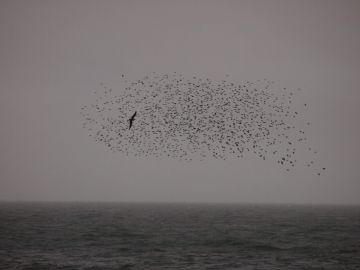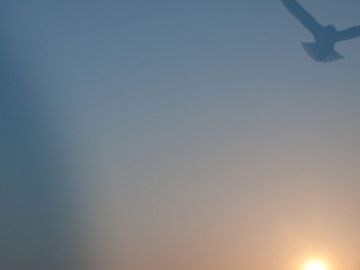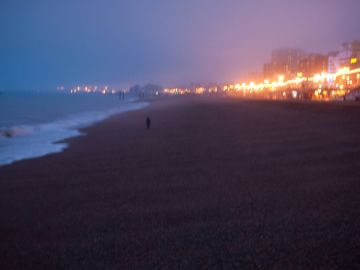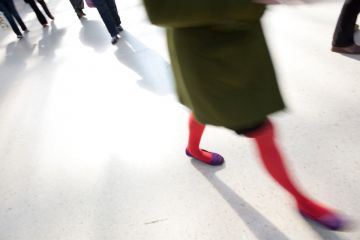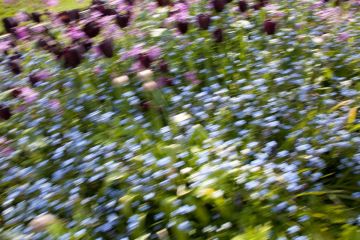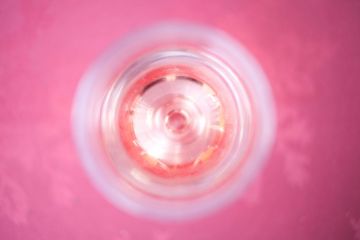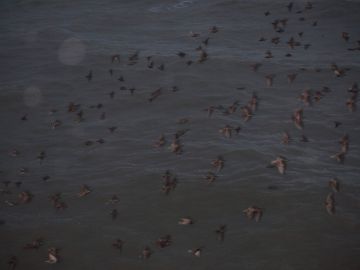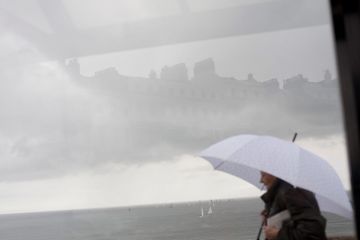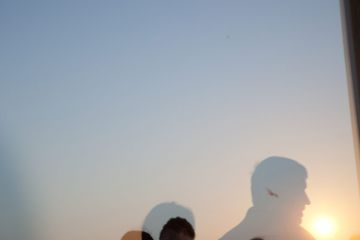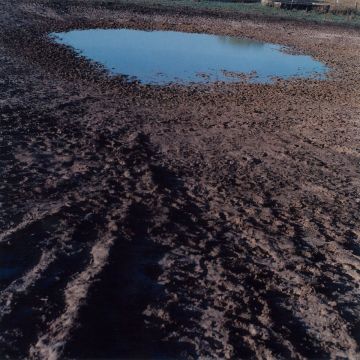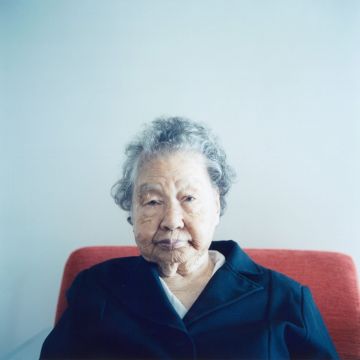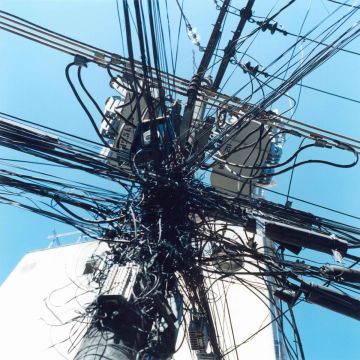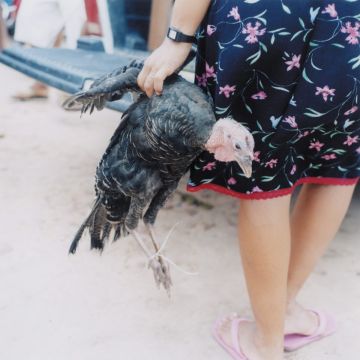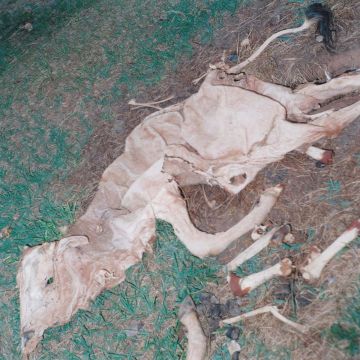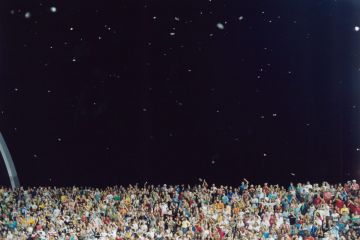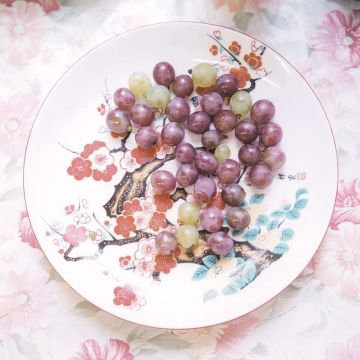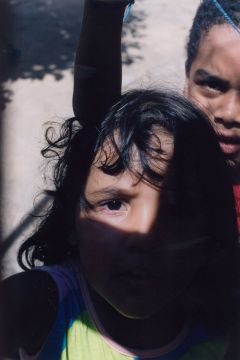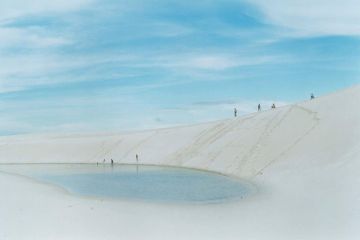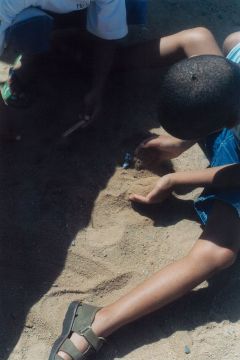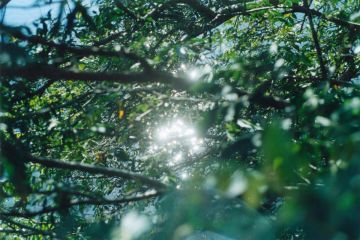An interlinking
A new series comprising images shot in the 6 x 6 square format that Kawauchi is known for, seen in ‘Utatane’ and ‘Illuminance’. The images in ‘An interlinking’ were assembled from Kawauchi’s photographic archive, reaching back two decades or more; some have never been seen by the public before. By contrast with the macro perspective often adopted in ‘M/E’, ‘An interlinking’ chiefly depicts the everyday – tiny lives shot from a faithfully life-sized perspective. Additionally, while ‘M/E’ was shot entirely digitally, the works in ‘An interlinking’ were all shot with a Rolleiflex 6 x 6 film camera. The print size is intentionally enlarged in order to place the viewer in a 1:1 relationship with each image.
M/E
M/E is a new series Kawauchi began shooting in 2019. The letters stand for 'Mother' and 'Earth', combining to form both 'Mother Earth' and 'Me'. Immediately, the series’ images of Iceland’s volcanoes and ice floes and Hokkaido’s snowy landscapes may seem distant and unrelated to the everyday scenes from the COVID-19 pandemic that accompany them in the series. However, both types of images depict events now taking place on the planet we live on, and Kawauchi’s artistry alerts us to the connection between them. This series invites the viewer to reconsider a range of questions about the workings of human life and our relationship with nature.
‘Some things can only be obtained through moving my body to face my photographic subject head-on. I have found this an effective way to approach, however incrementally, the unanswerable question of why I find myself alive right here and right now. After living this way for more than thirty years, I felt the desire to once more confirm the ground on which I stood. Not in terms of regional or national bounds, but the fact that I was on a planet. When I visited Iceland in the summer of 2019—I had been there only once before, some twenty years ago—that desire was fulfilled. I saw geysers like the planet’s breath and glaciers far beyond any human time. And what I saw seemed to illuminate my own existence. One experience inside a dormant volcano left a particularly strong impression. When I looked up, I saw light spilling in through the crater above, and its shape was reminiscent of female genitalia. As I gazed at this sight, I had the sense of being a foetus enveloped by the earth, and I felt a connection to this planet I have never felt before. My plans to visit Iceland again in winter to probe these connections more deeply were thwarted by COVID-19. Partly as a result of this, I visited Hokkaido many times in the winter of last year. There I saw things that could only be seen in the bitterest cold and recalled how small and frail my own body truly was. Take the initials of 'Mother Earth', and the result is 'M/E'. When I wrote out those two letters, I felt a connection between all things, from those so vast their full form cannot be surveyed with the naked eye to the tiniest individuals—and was reminded of that mysterious sensation I experienced beneath the volcanic crater of inversion and unity between the planet and myself.’– Rinko Kawauchi
Halo
Rinko Kawauchi's series ‘Halo’, where the artist expands her exploration of spirituality started in 2013 with the series 'Ametsuchi', is made up of three interwoven sections, focusing on differing spiritual traditions. One of the three sections depicts the countless numbers of migratory birds to appear throughout Europe in wintertime, with their movements almost resemble a dance, where smaller flocks, one by one, come together to create a massive, collective body – a phenomenon that comes to resemble human society itself, feeling the unidentifiable power brought about by being part of a great crowd. Another part of the series depicts the ancient festival ‚DaShuhua’ in the Hebei province in China, originated when people began to throw molten iron against the city walls as the poor people’s equivalent to beautiful yet expensive fireworks – a yearn to witness beauty, even in the most dire conditions. The third part is dedicated to the Japanese festival 'Kami Mukae Sai' in Izumo. During the 10th month of the Japanese lunar calendar ('Kannazuki') the Shinto gods are believed to come together in the Izumo region. People welcome them with sacred flames lighting up the shores as spectators watch. ‘The lights strobe and refract against the raindrops, and they glitter. The thoughts of the people in prayer, invisible to the human eye, too, take form and reflect in the drops’ – Rinko Kawauchi
The river embraced me
Rinko Kawauchi’s series ‘The river embraced me’ was conceived in the context of a commissioned exhibition at the Contemporary Art Museum in Kumamoto, whose aim was to combine individual memories and stories of Kumamoto’s inhabitants with works of photography. An open call resulted in photographs shot at more than 40 locations around Kumamoto and its environs, from parks and the seashore to a train station, empty road, and pond with koi. The series marks a collaborative effort between Kawauchi and the city’s people that chronicles memories in an evocative and personal way.
Ametsuchi
Rinko Kawauchi has gained international recognition for her nuanced, lushly colored images that offer closely observed fragments of everyday life. In her series ‘Ametsuchi’ the artist shifts her attention from the micro to the macro, focusing on the volcanic landscape of Japan’s Mount Aso – a renowned site of Shinto rituals. The title ‘Ametsuchi’ is comprised of two Japanese characters meaning ‘heaven and earth’, and is taken from the title of one of the oldest pangrams in Japanese – a chant in which each character of the Japanese syllabary is used. In this group of works Kawauchi brings together images of distant constellations and tiny figures lost within landscapes, as well as photographs of a traditional style of controlled-burn farming (yakihata) in which the cycles of cultivation and recovery span decades and generations. Punctuating the series are images of Buddhist rituals and other religious ceremonies – a suggestion of other means by which humankind has traditionally attempted to transcend time and memory.
Illuminance
Reminiscent of Japanese photography of the 1960s Rinko Kawauchi’s work is the search for the sublime amid the banal. Her photographs have frequently been lauded for their nuanced palette and offhand compositional mastery, as well as their ability to incite wonder via careful attention to tiny gestures and the incidental details of her everyday environment. In Illuminance, Kawauchi continues her exploration of the extraordinary in the mundane, drawn to the fundamental cycles of life and the seemingly inadvertent, fractal-like organization of the natural world into formal patterns.
AILA
Some creatures are to die soon after the birth; some creatures are born only to be eaten by the others to sustain their lives. All the living creatures are accepting their fate in the life no matter what it is. The mysterious and precious moments of the birth of various creatures. The blessings of being living. The babbles, vividness, beauty, joy, and the ephemeral existence of the lives in nature. In her series ‘AILA’ Rinko Kawauchi invites us to confront the line between life and death. By interspersing the portraits of everyday situations throughout the series, AILA becomes one of her most completed, overwhelmingly big series to date.
Cui Cui
The works from the series ‘Cui Cui’ are memories of Rinko Kawauchi’s family which she has been shooting for 13 years, including scenes of her family gathering in New Year’s Holidays, the wedding of her older brother, her grandfather’s death, the birth of a new life... The title evokes the twitter of sparrows, a metaphor for the family ties and minute events that accompany each of our lives and mark the way time flies. The photographs evoke the scenery of hometown with smell of people and earth. It could be everyone’s family album, stirring a memory of days gone by.
The eyes, the ears
Reminiscent of Japanese photography of the 1960s Rinko Kawauchi’s work is the search for the sublime amid the banal. Her photographs have frequently been lauded for their nuanced palette and offhand compositional mastery, as well as their ability to incite wonder via careful attention to tiny gestures and the incidental details of her everyday environment. Ordinary scenes such as small insects, flowers and children, compose this delicate photographic series, which in the homonymous photobook is accompanied by whispery words put together by Rinko Kawauchi herself, giving to the title of the series – which at first glance seems to refer to her attention for fragmented details of everyday life – a multiple meaning.
HANABI
Reminiscent of Japanese photography of the 1960s Rinko Kawauchi’s work is the search for the sublime amid the banal. Her series ‘HANABI’ (Japanese term for ‘firework’) depicts the photographer's vision of a fireworks show. The breezes of summer nights, the footsteps of children running alongside a riverbank, clouds portending warm showers and the sweet smell of apple candy are at powerfully nostalgic, at once both beautiful and melancholy. We are drawn in by a dance of lights and colors, and in the blink of an eye, an elegant and sensory party draws to a close, leaving us wondering what Kawauchi saw in the fireworks, and what lies beyond them.
Utatane
Reminiscent of Japanese photography of the 1960s Rinko Kawauchi’s works from the series ‘Utatane’ (Japanese term for ‘Catnap’) are the search for the sublime amid the banal. Carps, clouds, a curtain, a tire, fried eggs, a grandfather, a butterfly. These are the details of everyday life that are too easily missed. Seen through the lens of Kawauchi’s camera however, the ordinary shines with patterns of light; even an ant transforms into a statement of style. A graceful contemplation of mortality, which demonstrate the artist’s finesse and skill of telling a photographic tale.
